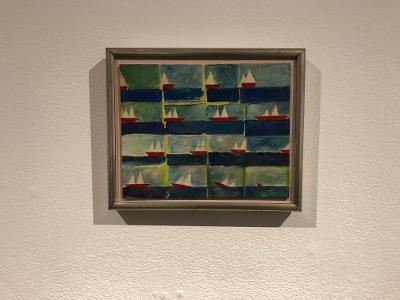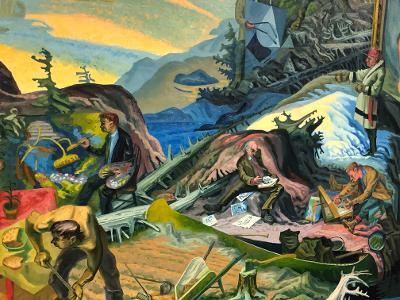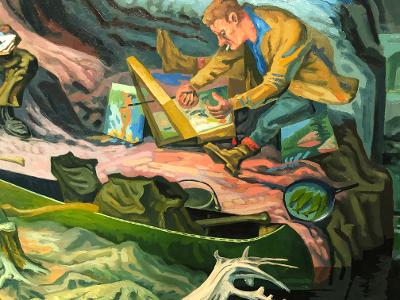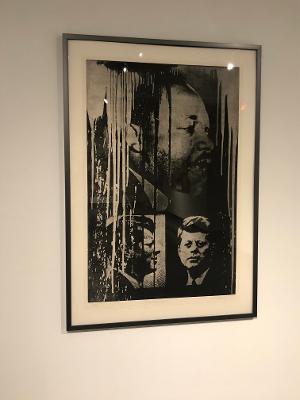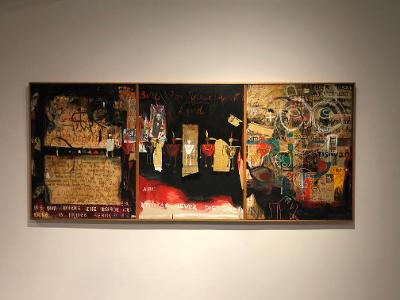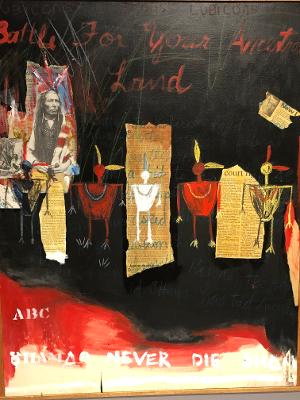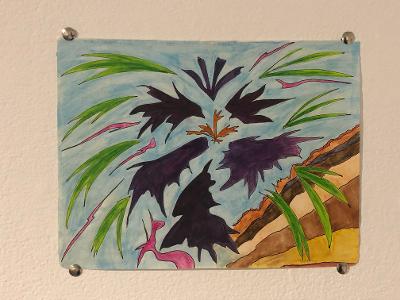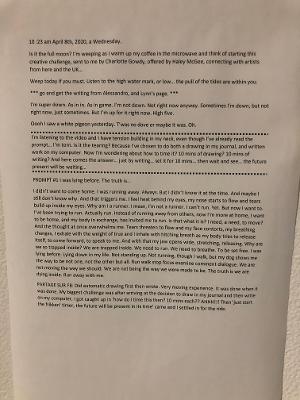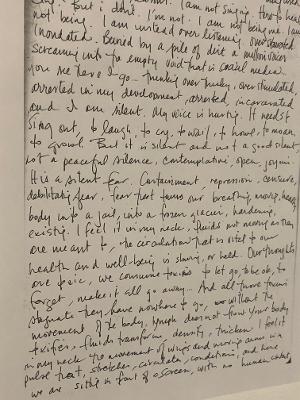I promised to write something ‘other,’ afterwards. Sometimes, ‘afterwards’ is overwhelming, and can’t be shared right away. It takes time to process major losses in a life, a grief that digs deep to root into your own body. Sometimes, ‘afterwards’ is about pretending or imagining that you are a turtle, and pulling into your shell and building strong walls so that you know you are strong enough on your own, without anyone else to lean on.
Sometimes, the phrase “long hauler” or “Long Covid,” when uttered by a colleague before 8am on an anonymous Tuesday, can strike fear into you, so that your blood runs cold. Sometimes, it takes a few months to say–out loud–that you are not yourself, as you were before you had Covid. These are facts. Anti-maskers, and conspiracy theorists alike, will say that this is paranoia. That’s fine. I know differently. Each day, for me, and I’m sure for many others who also deal with the ‘leftovers’ of Covid–regardless of which incarnation or variant–is frustrating, a reminder, always, that you are not who you once were…and that a virus, a simple virus (maybe?), has done its best work on your body, mind, and even your soul. No one really wants to hear it anyway. They would rather go to a far off island hot spot on March Break, or cast off masks in public places, or pretend that this virus is no longer a threat. They…even though they will not understand, will never know what Covid has wrought in the lives of many who do not (or cannot) speak up–with words on paper, like these, or with words spoken.
*
These are the things:
After all this time, I cannot taste or smell. As a poet, this is devastating. That is all there is–really–to say about it. There is no ‘maybe’ or ‘if’ or ‘perhaps someday.’ Instead, there is reading about smell and taste recovery times on the internet to try and find an answer, there is searching out research about timelines and ‘maybe after six months or a year.’ Imagine that. I am at four months now, and perhaps a bit longer. Four months and a week, likely, but I have never been good at math or science. (That I love to write science poetry astounds me still.) I have stopped counting days and weeks as if my life were a Sinead O’Connor song written by Prince. I have given up hoping for a return to sensory recovery. It is easier that way. Less disappointing. Less crushing, maybe. More realistic, definitely.
A poet friend asked me last week how I was “really doing” while we were at a small, socially distanced literary event. I wasn’t sure that he wanted to know the actual answer. Most people don’t want to know. “I am managing,” is what I answered. Then, he nodded, asked, quietly, carefully, “Is it…all about texture and temperature, then, when you eat food?” I nodded, “Yes. It is all about that now.” There is not much to say after that, mostly because people look as if they either a) don’t want to hear or believe it, or b) feel sorry that this has happened to me, or c) just rush in to say that they know someone who has had Covid, and that it has been ‘very mild’ and ‘like a cold’ and ‘nothing much more’ so they are not worried. They, though, have not had dreams of their dead mother and have not been so weak that they have not left their bed or walked for more than a month. The initial experience is devastating, too, and trauma inducing. I think most Covid people, the ones who it has really deeply affected, just know that no one cares to know or hear it.
It is okay. We all walk different paths, so these experiences of ours, with Covid, are varied. But…they are real…and there are more of us, who struggle still, than you imagine. You would, perhaps, rather pretend that it is better–now that we do not socially distance, or mask in public places, or test, record, and count cases. Ignorance is bliss. We are there now, at the place where ignorance masquerades as bliss in our western society. It makes the people who are okay feel better. For those of us with ‘leftovers,’ that is simply not the case.
I try to remember the taste of coffee. I love it. I make it every morning, in the very early morning hours, and imagine what I remember of its essence: the smell, how it used to fill a room, and the taste, after it has brewed. These things are gone. I try to remember the scent of lavender in the bath. It isn’t there. There are sea salts, and epsom salts, and things that make my tired body relax. There are those things. There is the feel of oil in hot, hot, hot bath water. And, too, there is the idea, when you are sitting in a hot bath, that it is not *hot* enough. No. It is not hot enough because you’ll long for intensity of senses, not just faded watermarks.
Sometimes, waves of sadness wash over me when I’m least expecting it: what was the scent of toast again, burning? Now, it burns and I can’t even sense it, except for the slim fronds of smoke that rise up from the toaster if I’ve forgotten it. What was the scent of my favourite perfume? Karma, from Lush? I buy a small bottle online, have it delivered, spray it on my wrists and try to remember what it was all about, how it made me feel myself. Ghosted, that scent. I test it each morning, thinking I will jar my nose, my brain, back to life. It never works. Not yet, anyway.
These things, though, are only little things. The one that bothers me most is making my way from the bottom of the school to the top. Two sets of stairs. I must go slow, even though I used to go fast. I must take deep breaths, pace them, so that I don’t lose all breath at once. I must…ration the breath that I have left in my lungs. If I rush, hurry, as I used to, I find myself up at the top of the stairs, a bit dizzy and wobbly, gulping under a mask like a fish out of water. “Find a wall,” I tell myself, “don’t panic. Look normal. Find a wall. Put a hand there, up against it. Ground down, into the floor, the earth, and pretend you are a tree. Grow roots.” Then, a breath or few to catch the air, to calm the heartbeat, to gather self to self and be calm inside. If I’m lucky, the dizziness won’t hit at the same time as the breathlessness does. Together, the two are a bit terrifying.
I’m writing this….why?…so that you know how it feels. The province, the country, the world….pretends it is all over, but for those of us with what I like to call “elements of Long Covid” (because the shorter version of that phrase frightens me too much, and I live alone with a dog), it isn’t over. We walk with it in our bodies, our minds, our hearts. We’re the ones who will be wearing masks for much longer than the rest of you. Please know why…or at least imagine it…and think of how it feels to press against it for months after you rise from that sickbed.
A friend who is a writer out west sent me a kind note. “I know you don’t want to think about it…but this is chronic illness now. This is physical and mental.” It is undefined, uncategorized, and often scorned in small, almost passive-aggressive ways within our society. My friend sent me a link to a yoga series. “Try it…” But I found myself avoiding it, dreading it, thinking of how I am weaker than I was, but building myself back up again. Sometimes chronic illness isn’t as visible as you’d imagine, and sometimes disability comes to you in strange, small, covert ways. It took a friend who has dealt with chronic illness and disability to know that I was struggling, to know that I need to come to terms with these new struggles, in a world that ignores them, or wishes they weren’t there, or that just doesn’t want to think that it could all happen to them…more easily than they would imagine.
I lose words now. This is much scarier than it would seem to you, if you are not a writer, and if you are not a teacher. I reach for words…that have vanished…and don’t seem to return. I take a deep breath, lean into the uncertainty, let it teach me the biggest lessons of my life. The fatigue, too, comes in waves, and sends me to bed at 7:30 or 8pm…in a house that is quieter than I’d ever thought it could be.
Today, I lifted a kettlebell and used weights to build physical strength again. I keep at it, three times a week. I get stronger. I am not the strong woman I was in mid-November, when I was far, far stronger. My cardio is negatively affected. Badly. I walk slowly where I used to walk more quickly. I face waves of dizziness a number of times a day, and I find myself off balance, as if my centre of gravity is off, or something…scientific…that I don’t understand. Today, I held a plank for sixty seconds. I used to be able to do that for much longer. I used to be able to do yoga every day. Now, if I stretch out into positions that make me dizzy, I fall. I am not myself. But…I am a new self. I am grateful for the vaccines. And I am grateful for my lungs. Another friend said, kindly, “Your nose, your mouth…they sacrificed themselves for your lungs, for your breath. They’ll come back, the scent and taste of things, once you’ve healed.” I hope…to swim again…in late June…but I sometimes cry to think that will not be there. I have time, though, so I am hopeful.
I am still here. I am weaker…and stronger…all at the same time.
But…do not think it is over, this pandemic. That is where you are courted, manipulated even, by the self-involved, narcissistic illlusions of the “Before Times,” when….really…there’s no return to that place in space. There’s only a new place in space, one that has yet to be discovered or defined…one that requires you to be honest with yourself first, at the core of your being. Start there. Then take a first step. And then another…
Be kind. Be well. Get vaccinated. It will save your life….no matter what the people who don’t believe in science say. You will miss things you once took for granted, but you will still be here…and you will use touch and hearing to make up for the loss of scent and taste.
Blessings ,
k.





























